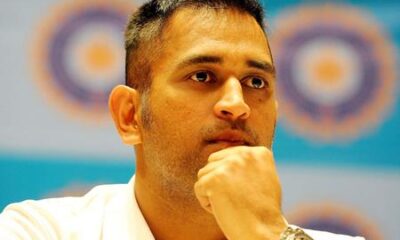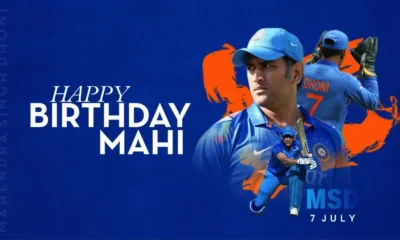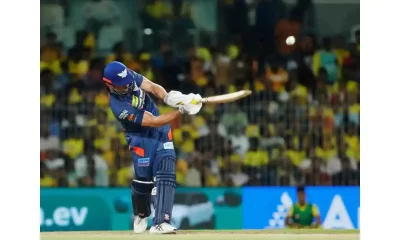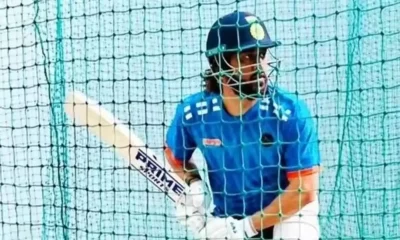Cricket news
The Mahi Way

Cricket news
Rohit Sharma reveals retirement thoughts after 2023 World Cup final heartbreak
Rohit Sharma has revealed that he thought about retiring after the 2023 ODI World Cup final defeat, describing the period as emotionally draining and difficult to overcome.
Cricket news
India announces T20 World Cup 2026 squad, Shubman Gill dropped as Axar Patel named vice-captain
India have announced their T20 World Cup 2026 squad, dropping Shubman Gill and appointing Axar Patel as vice-captain under Suryakumar Yadav’s leadership.
Cricket news
T20 World Cup 2026: Selectors weigh Shubman Gill role as India squad announcement awaited
India’s T20 World Cup 2026 squad announcement is awaited, with selectors debating Shubman Gill’s role amid strong performances from senior players.
-

 India News16 hours ago
India News16 hours agoBangladeshi singer James’ concert cancelled after mob attack in Faridpur
-

 India News13 hours ago
India News13 hours agoBJP and Shiv Sena reach broad seat-sharing deal ahead of BMC elections
-

 India News17 hours ago
India News17 hours agoCBI moves Supreme Court against suspension of Kuldeep Sengar’s life sentence in Unnao rape case
-

 India News16 hours ago
India News16 hours agoOp Aaghat 3.0: Delhi police arrest over 280 accused ahead of New Year celebrations
-

 India News16 hours ago
India News16 hours agoOver 2,000 Maoists surrender under Chhattisgarh rehabilitation policy, says CM Vishnu Deo Sai

 Captaincy takes its toll on cricketers, more so if you are a wicket-keeper batsman. Being on the wrong side of 30s, Dhoni knew that the task would get tougher and tougher – although he has managed to retain his fitness levels and could still give any youngster in the Indian team a run for his money. That he has managed to don both the roles (captain and wicket-keeper batsman) commendably and with aplomb for so long is legendary and only a handful of players have done so in cricket. Farokh Engineer was one, but he held the captaincy for a short period. Kumara Sangakkara, Brendan McCullum and Andy Flower were others who succeeded in this difficult task.[/vc_column_text][vc_column_text]Demands of captaincy (that too a winning captain) was casting its shadow on Dhoni’s exploits with the bat. The man who is considered in world cricket as the greatest finisher of the game (in shorter formats) wasn’t doing justice to his potential and record. Fault lines had started appearing on his performance. The “impregnable” and “he-could-do- no-wrong-with-the-bat” image was slowly but surely taking a beating. The ODI team under him had lost 11 and won 10 matches after the 2015 World Cup.
Captaincy takes its toll on cricketers, more so if you are a wicket-keeper batsman. Being on the wrong side of 30s, Dhoni knew that the task would get tougher and tougher – although he has managed to retain his fitness levels and could still give any youngster in the Indian team a run for his money. That he has managed to don both the roles (captain and wicket-keeper batsman) commendably and with aplomb for so long is legendary and only a handful of players have done so in cricket. Farokh Engineer was one, but he held the captaincy for a short period. Kumara Sangakkara, Brendan McCullum and Andy Flower were others who succeeded in this difficult task.[/vc_column_text][vc_column_text]Demands of captaincy (that too a winning captain) was casting its shadow on Dhoni’s exploits with the bat. The man who is considered in world cricket as the greatest finisher of the game (in shorter formats) wasn’t doing justice to his potential and record. Fault lines had started appearing on his performance. The “impregnable” and “he-could-do- no-wrong-with-the-bat” image was slowly but surely taking a beating. The ODI team under him had lost 11 and won 10 matches after the 2015 World Cup.














